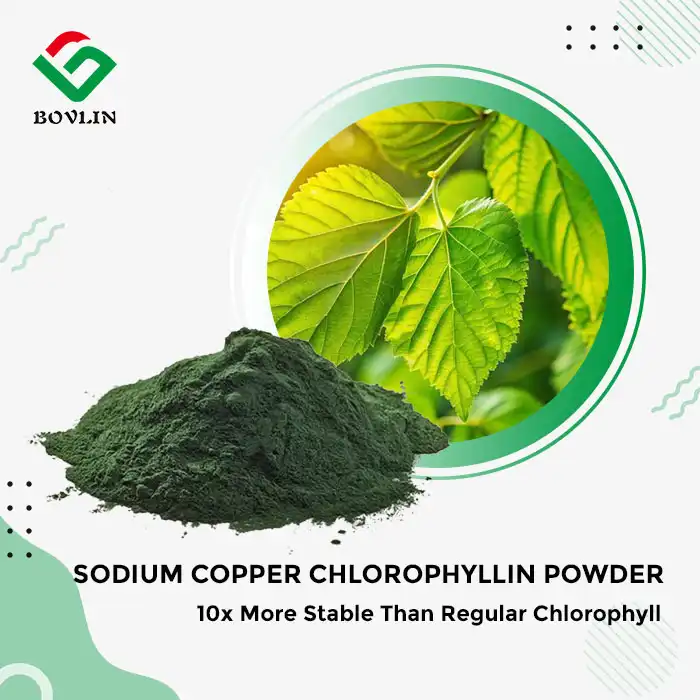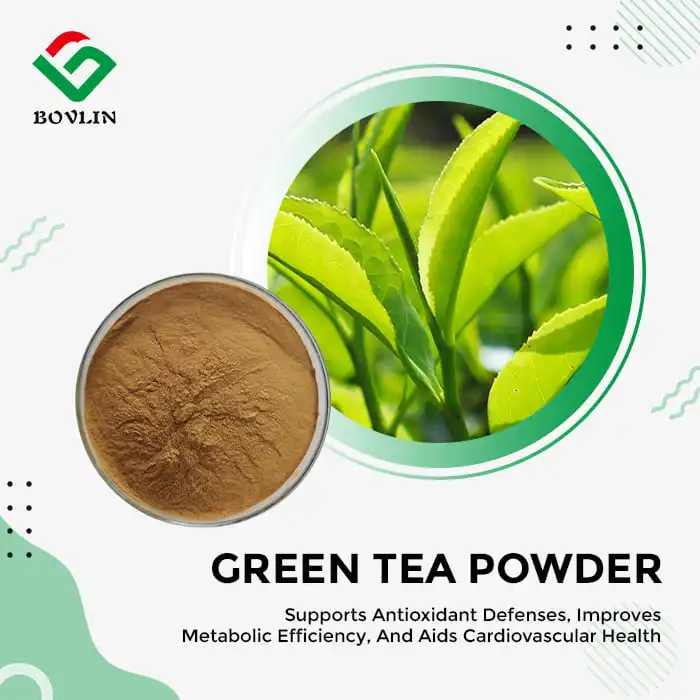How Can Oolong Tea Powder Be Integrated into Savory Dishes?
Enhancing Umami in Sauces and Marinades
Oolong tea powder can be a game-changer in savory applications, particularly in sauces and marinades. Its complex flavor profile, which includes subtle notes of fruitiness and nuttiness, can enhance the umami taste in various dishes. Food manufacturers can incorporate oolong tea powder into their sauce formulations to create unique flavor combinations that set their products apart in the market.
For example, a teriyaki sauce infused with oolong tea powder can offer a more nuanced flavor profile, appealing to consumers seeking innovative Asian-inspired flavors. The tea powder can be blended seamlessly into the sauce, providing a subtle depth that complements the sweetness of traditional teriyaki ingredients. Similarly, marinades for meats and vegetables can benefit from the addition of oolong tea powder, imparting a gentle astringency that balances rich flavors and tenderizes proteins.
Incorporating into Spice Blends and Rubs
Another creative way to use oolong tea powder in savory applications is by incorporating it into spice blends and rubs. The fine texture of the powder allows for easy integration with other dry ingredients, creating versatile seasoning mixes that can be used across a range of products. Food manufacturers can develop unique spice blends that feature oolong tea powder as a key ingredient, offering consumers a novel taste experience.
These oolong-infused spice blends can be used to coat nuts, season popcorn, or create flavorful crusts for meats and plant-based proteins. The tea powder's subtle complexity can enhance the overall flavor profile of these blends, providing a sophisticated twist to familiar snacks and seasonings. Additionally, the antioxidant properties of oolong tea can be a selling point for health-conscious consumers looking for functional ingredients in their food products.
Elevating Soups and Broths
Oolong tea powder can also play a significant role in elevating soups and broths. Its delicate flavor can add depth to clear broths without overpowering other ingredients. Food manufacturers can explore the use of oolong tea powder in instant soup mixes, bouillon cubes, or ready-to-eat soup products to create unique flavor profiles that stand out in the market.
For instance, a miso soup base enhanced with oolong tea powder can offer a more complex umami flavor, appealing to consumers looking for gourmet instant soup options. The tea powder can also be used to create innovative vegetable broths, providing a subtle earthy note that complements the natural flavors of vegetables. This application can be particularly appealing for plant-based product lines, offering a new dimension to vegan and vegetarian soup options.
Oolong Tea Powder in Bakery and Confectionery Applications
Infusing Flavor into Baked Goods
Oolong tea powder presents exciting possibilities for the bakery industry, offering a unique flavor profile that can elevate traditional baked goods. Its subtle sweetness and floral notes make it an excellent addition to various pastries, cakes, and bread products. Food manufacturers can incorporate oolong tea powder into their baking mixes or pre-made products to create distinctive offerings that appeal to adventurous consumers.
For example, oolong tea powder can be blended into cookie dough to create sophisticated tea-infused cookies. The powder's fine texture ensures even distribution throughout the dough, resulting in a consistent flavor and appealing speckled appearance. Similarly, bread manufacturers can incorporate oolong tea powder into artisanal loaves, creating a unique flavor profile that pairs well with both sweet and savory toppings. This application can be particularly attractive for premium bakery lines targeting health-conscious consumers who appreciate the potential health benefits of tea.
Creating Unique Confectionery Products
The confectionery industry can also benefit from the creative use of instant oolong tea powder. Its complex flavor profile can add depth and sophistication to various sweet treats, offering consumers new and exciting taste experiences. Chocolate manufacturers, in particular, can explore the potential of oolong tea powder in their formulations to create premium, tea-infused chocolate products.
Oolong tea powder can be incorporated into chocolate ganaches, truffles, or bars, creating a harmonious blend of flavors that appeals to gourmet chocolate enthusiasts. The subtle nuttiness of the tea complements the rich cocoa notes, resulting in a balanced and refined taste. Additionally, confectionery manufacturers can use oolong tea powder in caramels, nougats, or other soft candies, adding a unique twist to traditional confections and potentially attracting consumers looking for innovative flavor combinations.
Enhancing Ice Cream and Frozen Desserts
Oolong tea powder can also make a significant impact in the ice cream and frozen dessert sector. Its delicate flavor profile can add a sophisticated touch to various frozen treats, appealing to consumers seeking unique and premium options. Ice cream manufacturers can incorporate oolong tea powder into their base mixes to create distinctive flavors that stand out in a crowded market.
For instance, an oolong tea-flavored ice cream can offer a refreshing and nuanced taste experience, particularly appealing during warmer months. The tea powder can also be used to create swirls or ripples in other ice cream flavors, adding visual interest and flavor complexity. Furthermore, frozen yogurt and sorbet manufacturers can explore oolong tea powder as a flavor enhancer, creating lighter dessert options that cater to health-conscious consumers while still delivering an indulgent taste experience.

Flavor Innovation in Beverages and Culinary Products
Developing Unique Beverage Blends
Oolong tea powder offers tremendous potential for innovation in the beverage industry. Its versatility allows for the creation of unique drink blends that can cater to various consumer preferences. Beverage manufacturers can leverage the distinct flavor profile of oolong tea powder to develop new products that stand out in the competitive market.
For example, instant beverage mixes incorporating oolong tea powder can provide consumers with a convenient way to enjoy the complex flavors of oolong tea. These mixes can be formulated to create hot or cold beverages, offering versatility in consumption. Additionally, oolong tea powder can be used in the development of innovative ready-to-drink beverages, such as tea lattes or sparkling tea drinks, appealing to consumers looking for sophisticated and refreshing options.
Enhancing Dairy and Non-Dairy Products
The dairy and non-dairy product sectors can benefit significantly from the incorporation of instant oolong tea powder. Its unique flavor profile can add depth and complexity to various milk-based and plant-based products, offering consumers new taste experiences in familiar formats. Manufacturers can explore the use of oolong tea powder in yogurts, flavored milk, and non-dairy alternatives to create distinctive product lines.
For instance, an oolong tea-flavored yogurt can provide a sophisticated twist on traditional fruit flavors, appealing to adult consumers seeking more refined taste options. Similarly, plant-based milk manufacturers can use oolong tea powder to create unique flavored alternatives that stand out in the growing non-dairy market. The subtle sweetness and floral notes of oolong tea can complement a variety of plant-based ingredients, resulting in harmonious and appealing flavor combinations.
Creating Innovative Culinary Syrups and Concentrates
Oolong tea powder can also be used to create innovative culinary syrups and concentrates, offering food service providers and home cooks versatile ingredients for flavor enhancement. These concentrated forms can be used in a variety of applications, from cocktails and mocktails to dessert toppings and savory glazes.
Manufacturers can develop oolong tea syrups that capture the essence of the tea's complex flavor profile, allowing for easy incorporation into various recipes. These syrups can be used to add a unique twist to beverages, drizzle over desserts, or glaze meats and vegetables. Additionally, oolong tea concentrates can be created for use in professional kitchens, providing chefs with a convenient way to infuse dishes with the subtle flavors of oolong tea. These products can cater to the growing demand for unique and premium ingredients in the food service industry.
Conclusion
Oolong tea powder presents a myriad of creative opportunities for the food and beverage industry. Its versatility in both savory and sweet applications, coupled with its unique flavor profile, makes it an excellent ingredient for product innovation. From enhancing umami in sauces to creating sophisticated confections and developing unique beverage blends, oolong tea powder offers manufacturers the chance to create distinctive products that appeal to modern consumers. By incorporating this versatile ingredient into their formulations, food and beverage companies can stay ahead of flavor trends and meet the growing demand for innovative, tea-infused products.
Contact Us
To explore how Shaanxi Bolin Biotechnology Co., Ltd. can support your product development with our high-quality oolong tea powder, please contact us at sales1@bovlin.com. Our team of experts is ready to assist you in creating innovative, tea-infused products that will captivate your customers and drive your business forward.
References
Chen, L., & Zhang, H. (2020). Oolong Tea: Chemistry and Processing Techniques. Journal of Food Science and Technology, 57(4), 1273-1285.
Wang, Y., et al. (2019). Antioxidant and Sensory Properties of Oolong Tea Powder in Food Applications. Food Chemistry, 282, 242-248.
Liu, S., et al. (2018). Flavor Profiles of Oolong Tea and Their Application in Food Products. Journal of Food Science, 83(6), 1445-1453.
Tan, J., et al. (2017). Innovative Uses of Tea Powders in Culinary Applications: A Review. Critical Reviews in Food Science and Nutrition, 57(15), 3119-3131.
Zhang, L., et al. (2021). Consumer Acceptance of Tea-Infused Food Products: A Cross-Cultural Study. Food Quality and Preference, 87, 104046.
Lee, K., & Park, S. (2019). The Role of Tea Powders in Functional Food Development: Current Trends and Future Perspectives. Trends in Food Science & Technology, 88, 513-526.












